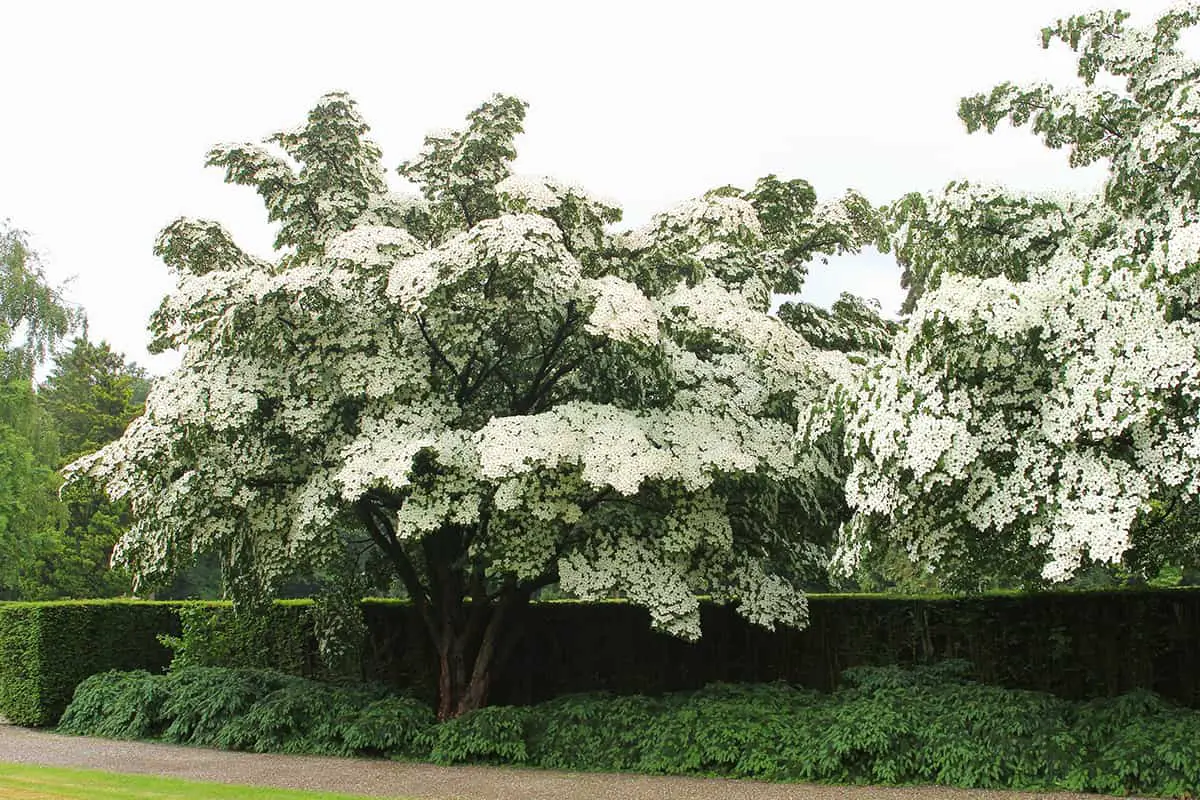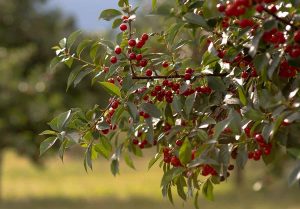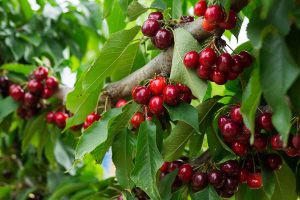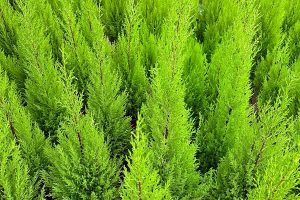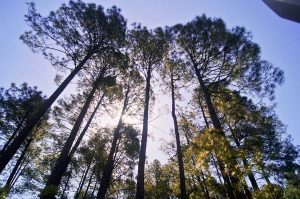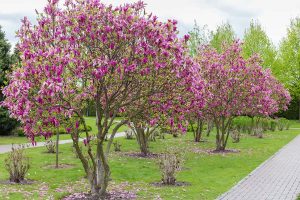The White Dogwood tree is a popular deciduous landscape tree that can be seen growing naturally throughout the eastern United States. It is hugely popular as an ornamental specimen in home gardens because it provides interest through all four seasons, and it is easy to care for. Here we take a closer look at the White Dogwood tree, and explain how to best look after it.
- Botanical name: Cornus florida
- Common names: White Dogwood, Flowering Dogwood, Blood Twig Dogwood, Eastern Flowering Dogwood, Common White Dogwood, Florida Dogwood
- Plant family: Cornaceae
- USDA hardiness zone: 5 – 9
- Mature height: 15 to 30 feet
- Mature spread: 15 to 30 feet
The White Dogwood is a deciduous plant, native to North America. It grows as a large, spreading shrub, or a small tree, from Ontario in Canada and Maine in the US, down the eastern coast through to Texas, Florida, and Mexico. It is widely considered one of the most attractive flowering small trees, providing four seasons of interest. In spring, white flowers bloom on the bare branches before the arrival of the leaves.
By summer, the tree is in full leaf, with fresh green foliage, and the flowers have given way to glossy orange-red berries. In fall, the leaves develop into striking shades of red and purple, before dropping to the ground to reveal the layered branches of the tree, which are covered in a patterned gray-brown bark. The White Dogwood is the state tree of both Missouri and Virginia, and its flower is the state flower of North Carolina.
Table of Contents
How to Care for your White Dogwood Tree
Light
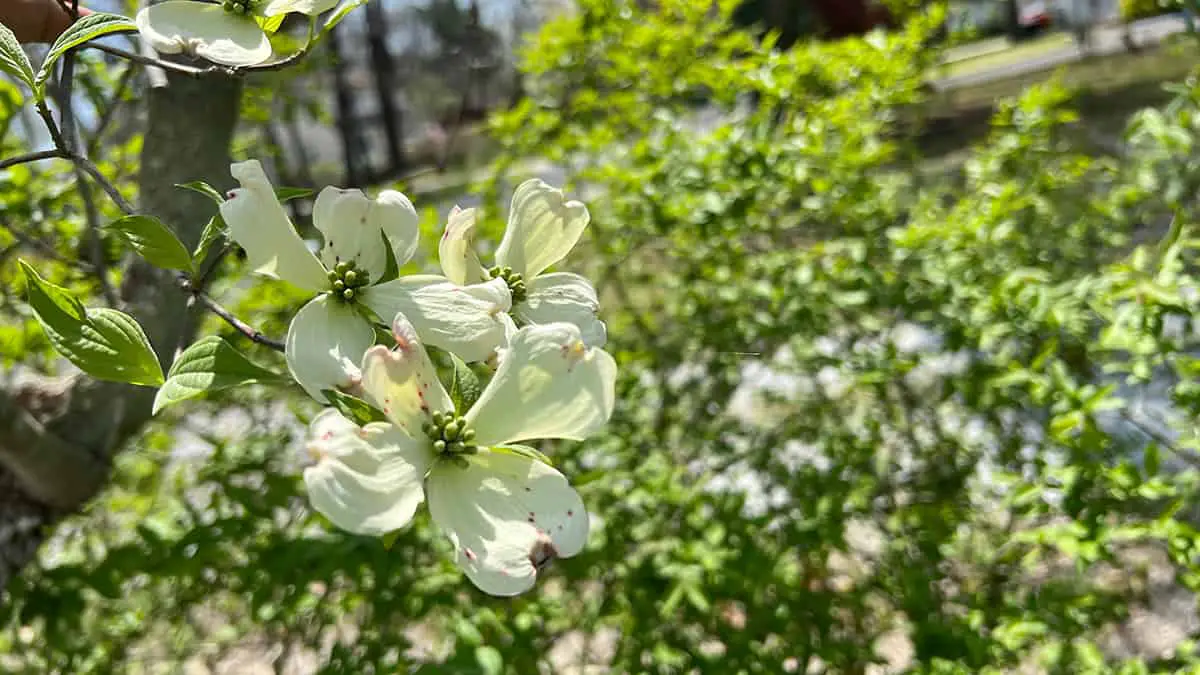
The White Dogwood can be grown in a variety of lighting conditions, from full sun through to shade. It performs best in partial shade, since the branches can become overly dense when grown in too much sunlight. By contrast, though the plant will grow in shade, the leaves require a certain amount of light to develop their spectacular coloring, and a lack of sun can also result in a decrease in flower production.
For the most attractive White Dogwood plant, position it in a spot where it will receive dappled shade beneath the sparse canopy of a taller tree, or set it close to another structure so it is in shade during the afternoon, and in direct sun for the remainder of the day.
Soil
White Dogwood plants should be grown in soil that is evenly moist, and the best way to achieve this is to choose soil that is well-draining and rich in organic content. This will help to encourage excess water away from the roots, while still retaining enough water to fulfill the plant’s moisture needs.
White Dogwood plants will flower most prolifically when grown in soil that is acidic. If your soil is alkaline, you should amend it to alter the pH for better flower production. These plants will grow well in neutral soil, though acidic soil is preferred.
Water
This plant has average moisture needs, preferring to grow in soil that is kept evenly moist. You should aim to strike a balance when watering the plant; do not leave it too long without water so that the soil dries out, but don’t water so frequently or heavily that the soil becomes soggy or waterlogged.
The plant will not usually need any additional moisture throughout the cooler seasons, able to survive on rainfall alone. As a young plant it will need supplemental water through the spring and summer, but once established it is able to survive periods of drought.
Temperature
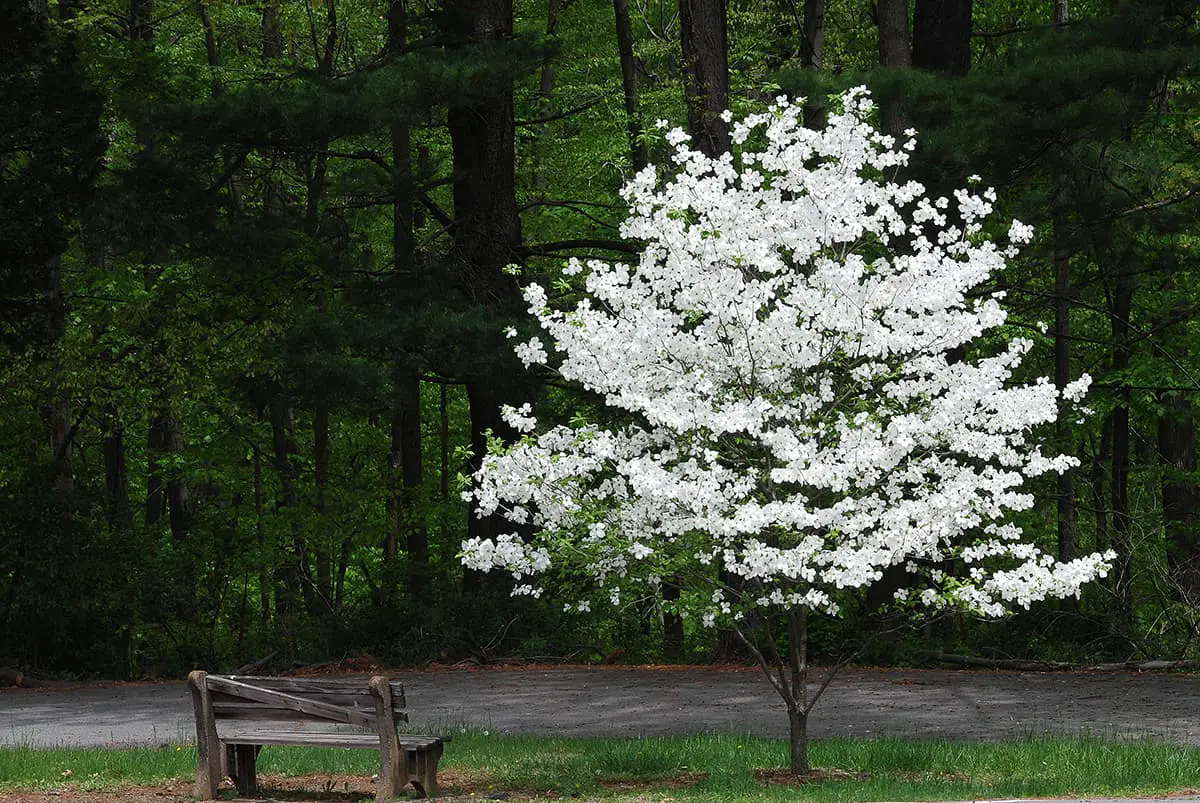
The White Dogwood can be grown throughout USDA hardiness zones 5 to 9. It struggles with high levels of heat, and efforts should be made to keep the roots of the plant cool in hot summers.
Add a layer of mulch over the soil to act as added insulation; this will help to keep the roots of the plant cool in the summer and prevent them from freezing in the winter.
Humidity
White Dogwood requires high levels of humidity in the summer to enable it to harden off for the winter. This helps to ensure that any new growth is tough enough to survive the colder months. In areas where humidity is low, any new growth attained over the spring and summer may die back during a cold winter.
Fertilizer
Regular fertilizer applications can help a White Dogwood tree stay healthy, and to ensure it grows to the best of its ability. Avoid fertilizing a White Dogwood during its first year of growth, as it will be too sensitive, and instead wait until the plant is 6 feet tall before using fertilizer.
Opt for a fertilizer intended for acidic-loving plants, in a granular formula. Dig this into the soil around the base of the tree, being careful to avoid coming into direct contact with the plant. In older White Dogwood plants, apply fertilizer to the soil in a 100 square foot area around the tree, as this will ensure the roots which have spread out will also get fed.
White Dogwood Tree FAQs
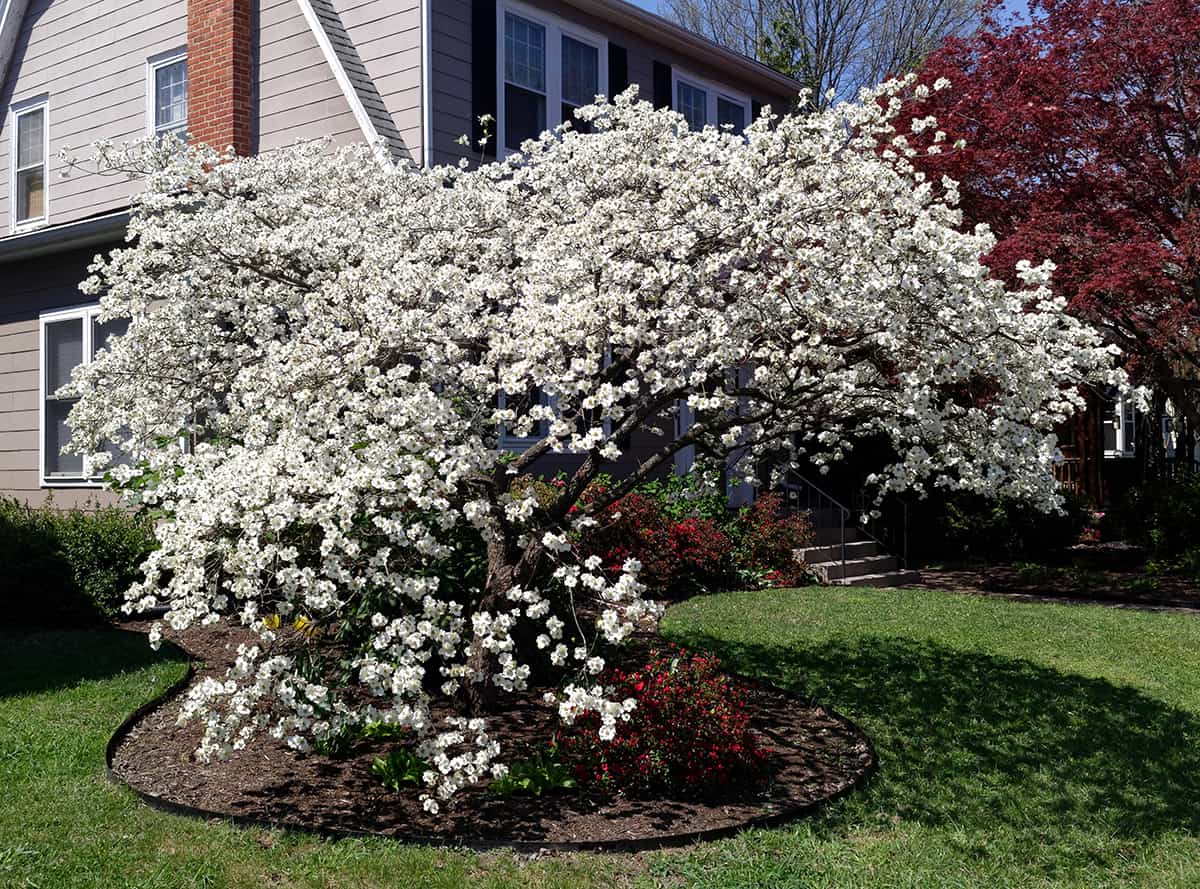
Are White Dogwood Tree roots invasive?
The roots of the White Dogwood tree are quite shallow, and they are not invasive. This means the plant is safe to position close to nearby structures such as houses and underground water pipes because the roots won’t cause any damage.
Typically the roots of most dogwood plants will not go beyond 5 inches into the depth of the soil. Instead, they spread far and wide horizontally. The roots of the plant can spread out further than the canopy of the tree, but they are not considered invasive since they do not grow aggressively or deeply.
How big do White Dogwood Trees get?
Typically you can expect a White Dogwood tree to reach a mature height of between 15 and 30 feet. Most commonly they hover around the 30-foot mark, however, in some climates, they can grow beyond this to reach heights of 40 feet. In southeastern and south-central states in the US, such as Oklahoma, Kansas, and Texas, the White Dogwood is more likely to top out at around 40 feet in height.
When it comes to the width of the plant, this will depend on whether the dogwood is being grown as a shrub or a tree. As a shrub, it is quite common for the width measurement of the plant to exceed the height measurement, as the branches spread out horizontally. When grown as a tree, the White Dogwood will usually have a width similar to that of its height.
How big does the White Dogwood Tree get?
The White Dogwood is considered to be a large shrub or a small tree, with an eventual height that most often ranged between 15 and 30 feet, though there are some exceptions to this. The plant is considered to be an understory tree which means it is suitable for growing beneath the canopy of taller trees.
The size of the White Dogwood means it will work well in home gardens that are medium to large in size. Since the tree has a horizontal spreading habit, the White Dogwood requires a reasonable amount of width space in a landscape to spread its branches.
How fast do White Dogwood Trees grow?
The White Dogwood has a moderate rate of growth, typically gaining between 1 and 2 feet in height each year. By the time the tree is 10 years old, on average it will measure 16 feet in height.
You can expect the plant to have reached its ultimate size when it is approximately 20 years old. If you are growing the White Dogwood as a privacy screen, it will take around 4 years for the plant to provide adequate levels of privacy.
Are White Dogwood berries poisonous?
White Dogwood berries are not poisonous, however, they are considered inedible by humans since they are extremely bitter. It is possible to cook the berries and mix them with other berries to make jams and jellies. Throughout history, the berries of the White Dogwood have been used medicinally.
There is evidence that a tincture was created from White Dogwood berries to help restore the stomach of alcoholics, and the berries were also used to create a tonic to aid with digestion. More commonly though, the berries of this tree are devoured by birds and other local wildlife.
When do White Dogwood Trees bloom?
The White Dogwood tree blooms early in the season to provide beauty in the landscape right at the beginning of spring. You can expect flowers to emerge on the White Dogwood tree in April, and remain through to May.
Interestingly, what we consider to be the flowers of the White Dogwood are not truly flowers at all. The white ‘petals’ that surround the central green parts of the ‘flowers’ are in fact bracts. The tiny green clusters in the middle of the white bracts are actually the true flowers.
